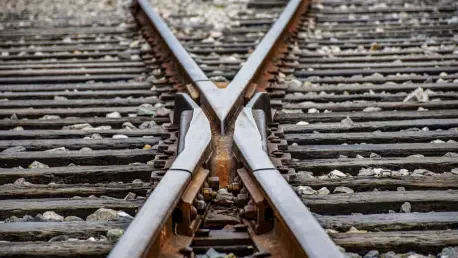I’m thrilled to sit down with Rohit Laila, a veteran in the logistics industry with decades of experience in supply chain and delivery. Rohit’s expertise extends into the innovative use of technology in rail infrastructure, making him the perfect person to discuss cutting-edge advancements like the Intelliweld Control System. In this conversation, we’ll explore how this technology is transforming rail welding, enhancing quality and efficiency, and shaping the future of the industry through real-time monitoring, data management, and remote support.
How did you first come across the Intelliweld Control System, and what was your initial impression of its potential in rail welding?
I first encountered the Intelliweld system a few years back while working on a project to optimize rail maintenance operations. My initial impression was that it was a game-changer. Unlike traditional control systems, it wasn’t just about automating a process—it combined real-time monitoring with intelligent decision-making. I could see right away that its ability to adapt on the fly and provide detailed data would make a huge difference in ensuring weld quality and reducing downtime on rail projects.
What sets Intelliweld apart from other control systems you’ve seen in your career in terms of weld quality?
What really stands out with Intelliweld is its precision and responsiveness. It monitors critical factors like force, voltage, and displacement during the welding process in real time. If something starts to go off track, it doesn’t just alert the operator—it can adjust parameters like heat times or even stop the process to prevent a bad weld. In my experience, that level of control is rare and incredibly valuable for maintaining consistent quality across large-scale rail networks.
Can you walk us through how Intelliweld handles data collection and why that’s important for rail projects?
Absolutely. Intelliweld captures a wealth of data for every single weld—things like upset distance, voltage, and other key metrics. This data is automatically turned into digital certificates and graphs that give a clear picture of the weld’s quality. For project managers like me, this is critical because it provides traceability and proof of compliance with standards. Plus, the data can be easily exported into tools like Excel, making it simple to analyze trends over a shift or an entire project.
How does the real-time process control of Intelliweld impact the day-to-day work on a rail site?
It’s a huge time-saver. The system operates with sub-millisecond monitoring, so it catches issues almost instantly. If there’s a deviation, it can tweak settings like extending preheating or, in worse cases, halt the process before a weld fails. This means fewer defective welds, less rework, and ultimately, lower costs. For crews on-site, it’s like having an extra set of eyes that never misses a detail, allowing them to focus on other tasks with confidence.
I understand Intelliweld offers remote connectivity. How has that feature changed the way field operations are supported?
Remote connectivity has been a lifesaver. Technicians can access weld data from anywhere, diagnose issues, and guide field crews without ever stepping foot on the site. I’ve seen situations where a potential problem was resolved in hours instead of days because a tech could review the data remotely and provide a fix. It cuts downtime significantly and keeps projects moving forward, which is crucial in an industry where delays can be incredibly costly.
In terms of quality assurance, how does Intelliweld help ensure compliance with strict industry standards?
Intelliweld simplifies quality assurance by constantly comparing live weld parameters against predefined tolerances. This is especially important for rail networks with stringent requirements, where even a small deviation can lead to safety concerns or penalties. The system ensures every weld meets the mark, and the detailed documentation backs that up. In my view, it’s an essential tool for maintaining trust with clients and regulators who demand consistency and accountability.
What are some of the automated tools within Intelliweld that have impressed you the most in supporting operators?
I’m particularly impressed by the automated calibration routine and the features for maintaining neutral rail temperature. The calibration tool ensures the system is always accurate without requiring much input from the operator, which reduces human error. Meanwhile, controlling rail temperature and consumption helps manage thermal stresses in the track. These automations make the operator’s job easier and ensure the equipment performs reliably, even under tough conditions.
Looking ahead, what is your forecast for the role of technologies like Intelliweld in the future of rail infrastructure?
I believe systems like Intelliweld are just the beginning. As rail networks continue to expand and face higher demands for safety and efficiency, technologies that offer real-time control, data transparency, and remote capabilities will become standard. We’re moving toward a future where predictive maintenance and artificial intelligence could integrate with systems like this to anticipate issues before they even happen. It’s an exciting time, and I think Intelliweld is paving the way for smarter, more resilient rail infrastructure.









